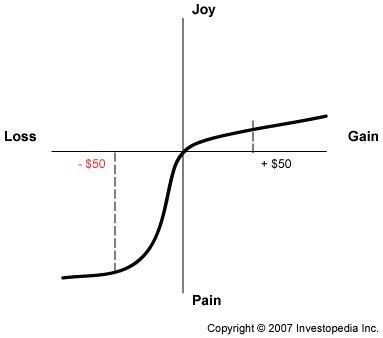In his best-seller Thinking Fast and Slow, Kahneman makes a distinction between two ‘systems’ of thinking:
System 1: Fast, automatic, frequent, emotional, stereotypic, …
System 2: Slow, effortful, infrequent, logical, calculating, conscious
I disagree they are always distinct, because often system 2 precedes system 1, except for possibly completely unforeseen events that require system 1, in which there is no preparation.
A daytrader may use system 1 when making trades but use system 2 when devising the strategy beforehand.
Also “fast” and “emotion”, although lumped in the same system, are not the same. A daytrader may be fast when making the trades but emotionless in his decision making process.
Overall, I find system 1 vs. system 2 thinking, as well as much of Kahneman’s work, to be unconvincing. The famous skew in prospect theory, for example as shown below, can be explained by the presence of a lower absorbing barrier in a brownian motion process. This is intuitive because a gambler or speculator can in theory make an infinite amount of money, but if the barrier is hit, the game stops for good. So it’s understandable given the risk of ruin why someone would be more averse to loss.

But this is what passes for Nobel Prize-quality research these days. If you can show people are irrational, have cognitive biases, or bad make decisions under contrived circumstances, you can get published. If you can create a study that shows white males are implicitly or subconsciously racist–boom–you can get tenure. That is how low the field of psychology has sunk. It’s little surprise ideologically-motivated research fails to replicate. But a study that shows that males have a slight positive bias for STEM aptitude…and cries for resignation and retraction are heard.